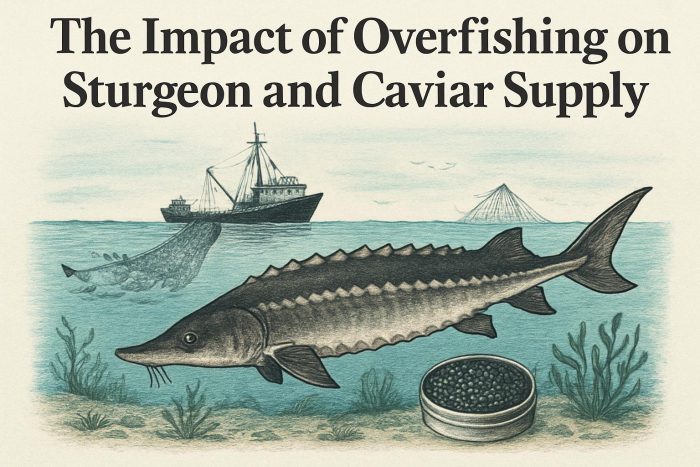The Impact of Overfishing on Sturgeon and Caviar Supply
The impact of overfishing has had significant repercussions on both the sturgeon population and the global supply of caviar, which is renowned for being a luxury delicacy. Sturgeon, a family of fish dating back to the time of the dinosaurs, are primarily known for their roe, which is processed into caviar. Due to excessive fishing practices, several sturgeon species have faced drastic population declines.
Understanding Sturgeon and Its Importance
Sturgeon are an anadromous fish, meaning they migrate from the sea into fresh water to spawn. Known for their longevity and late maturity, sturgeon species range across the northern hemisphere. Their roe, once harvested, is processed into what is commonly known as caviar, a high-value product in the gourmet food market.
The Mechanisms of Overfishing
Overfishing occurs when fish are harvested at a rate exceeding the fish population’s ability to replenish through natural reproduction. In the case of sturgeon, illegal fishing has substantially contributed to their population decline. Even though international regulations and conservation efforts have been implemented, enforcement remains a challenge.
Consequences for the Caviar Industry
The dwindling numbers of wild sturgeon directly affect the availability of high-quality caviar. As wild populations continue to decline, the cost of caviar rises, impacting both supply chains and consumers. Additionally, with fewer sturgeon, the genetics of remaining populations become a concern, potentially affecting the quality and flavor profiles of future caviar supplies.
Efforts Towards Sustainable Solutions
In response to the overfishing crisis, various measures are being pursued. Conservation programs focus on habitat restoration and the protection of spawning grounds. Additionally, sturgeon farming, or aquaculture, is increasingly seen as a viable alternative to wild harvests. By farming sturgeon specifically for caviar, the pressure on wild populations can be alleviated while still meeting market demands.
Conclusion
In summary, overfishing has led to a critical situation for sturgeon populations worldwide, threatening both biodiversity and the future of the caviar industry. Addressing this issue requires a balanced approach involving stricter regulations, conservation efforts, and the promotion of sustainable practices such as aquaculture. Through these concerted efforts, it is possible to secure a future where both sturgeon populations and the caviar industry can thrive.

